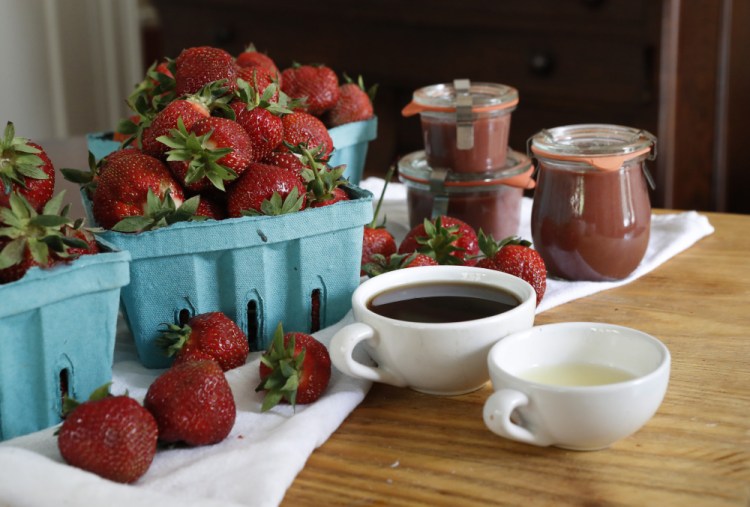My favorite way to eat local strawberries is straight out of the green, molded-pulp pint basket in which they are sold. Sometime they’re gone before I’ve left the market. When I’ve had my fill of strawberries in the raw, I whip up the jam my uncle and godfather (born Giacomo Luigi Piacquadio) taught me how to make 40 years ago as a means of stretching the summer berry bounty into the colder months.
But in recent years, I’ve picked up this twinge of eco-guilt in my gut each time I pour into the pot all the white, granulated sugar required to make his jam. After all, white sugar is from away (pretty far away, actually) and is very highly processed.
I started investigating the possibility of making my heirloom recipe with locally available and minimally processed sweeteners like honey and maple syrup to better understand how the substitution might cloud my treasured taste memory.
According to Kate McCarty, a food preservation assistant with the University of Maine Cooperative Extension, you can’t just do a one-for-one swap for chemistry’s sake. Firstly, both honey and maple syrup are, ounce for ounce, sweeter than white sugar. She strongly suggests following jam recipes specifically developed for natural sweeteners. Secondly, McCarty, who will be teaching a class on low-sugar jams at the University of Maine Regional Learning Center in Falmouth on July 7, says a canner must have some pectin in the mix to get a good set so that his jam doesn’t roll off his morning toast. She’s quite partial to Pomona’s Pectin’s recipe for Honey-Sweetened Strawberry-Rhubarb Jam.
And finally, McCarty warns that while these preserves are shelf stable if properly processed in a water bath to seal them, once they are open, they go off faster than those made with straight white sugar as the latter is a stronger preservative. She advises eating them within two weeks of breaking the seal on the jars.
Canning cookbook author Marisa McClellan recently released “Naturally Sweet Food in Jars,” which contains 100 recipes for jams, jellies, butters and syrups sweetened with honey, maple syrup and sugar, agave, coconut sugar, fruit juice concentrates and dried fruit. As a consummate jammer, she worried about her sugar intake. While these sweeteners are all still sugary in one of its forms (sucrose, glucose, or fructose), they are certainly less refined. McClellan adapted some of her white sugar favorites, like tomato jam, to taste very similar but also developed other recipes, like apple date butter, to specifically show off the deep undertones of the natural sweeteners. She says preserves made with them are flavorful, hold their quality over time and are far more welcome in her diet than those made from white sugar.
I still don’t think I’m emotionally ready to muck with my uncle’s strawberry jam recipe. Perhaps I’ll just make fewer jars of it this year and in the process cut back on white sugar overall. And I’ll fill the remainder of the preserves shelf in the basement with something like McClellan’s Strawberry-Maple Butter.
Christine Burns Rudalevige is a food writer, a recipe developer and tester, and a cooking teacher in Brunswick. Contact her at: cburn1227@gmail.com.
Send questions/comments to the editors.



